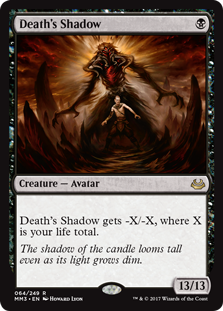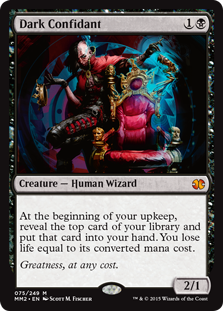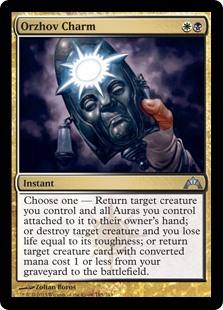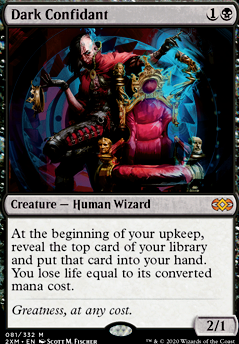Introduction
The Abzan colors -also known as 'Junk' has been my favorite color combination in magic for quite some time. The first time I tried the 'Abzan Midrange' or 'Junk' deck, I fell in love with the archetype, and playing anything else now feels lackluster. However, as the meta shifted, I found my matchups becoming less and less favorable, despite the deck having good overall matchups. 'Death's Shadow' is now a popular archetype, and seems to have replaced your typical midrange decks -and with good reason. Death's shadow decks still contain strong disruption but can also slam down an additional huge creature turn 2, which can become even bigger by the time it attacks on turn 3.
The Archetype
Jund death's shadow was the first popular color combination to feature death's shadow. While the Jund midrange deck plummeted in popularity, Death's Shadow became the most popular deck in the modern format. This deck ran off a delirium engine using cards like Mishra's Bauble and Traverse the Ulvenwald to achieve delirium and tutor a Death's Shadow or a Tarmogoyf. Naturally, when other color combinations started to spawn from the success of the Jund Shadow deck, Abzan kept this delirium engine as a part of its package. Time would prove Grixis to be the top death's shadow deck.
What I didn't like about the deck
First and foremost, I did not like the delirium package. Though you can often achieve delirium quickly, you sometimes miss on the mechanic, or your opponent packs graveyard hate to keep you out of it. Nothing sucks as bad as top-decking a Traverse the Ulvenwald turn 4 and you have no cards in your graveyard. Or top-decking a Mishra's Bauble, when you need to find a solution to an opposing threat. On top of already having a high number of Inquisition of Kozilek and Thoughtseize in the deck, when you factor in all your lands, your possibility for a dead draw when the game goes long is extremely high. To me, it just felt like the Jund and Abzan death's shadow decks were not able to find solutions like their midrange counterparts, which I enjoy immensely. If your opponent was able to stop you early, the deck would often just peter out as they continued to play magic and you struggled to answer their threats and find threats of your own.
Why I decided to run death's shadow
Honestly as Eldrazi Tron became more popular and the meta shifted from Jund Death's Shadow to Grixis Death's Shadow, I found my top-end card Siege Rhino to be less and less valuable in my games. It couldn't beat Tasigur, the Golden Fang, Gurmag Angler, Reality Smasher, Death's Shadow, Tarmogoyf, or Endbringer, despite only being able to come into play 1-2 turns later. The helix effect was nice, but way too expensive when the body that came with it was ineffective. Plus in the death's shadow matchup, it could actually end up helping the opponent. Because of this, I decided to cut Siege Rhino and run Death's Shadow instead.
The Transition
 Death's Shadow is a HUGE player in modern right now. Being a three color deck that needs to lean deep into , the deck naturally does a lot of damage to itself thanks to shocks and fetches. On top of that, I decided to run cards like Thoughtseize, Orzhov Charm and Dark Confidant that deal even more damage to myself. Death's Shadow not only turns one of the biggest disadvantages of the deck into an advantage, but also allows us to lean further in that direction, and run powerful cards that would otherwise be a death wish.
Death's Shadow is a HUGE player in modern right now. Being a three color deck that needs to lean deep into , the deck naturally does a lot of damage to itself thanks to shocks and fetches. On top of that, I decided to run cards like Thoughtseize, Orzhov Charm and Dark Confidant that deal even more damage to myself. Death's Shadow not only turns one of the biggest disadvantages of the deck into an advantage, but also allows us to lean further in that direction, and run powerful cards that would otherwise be a death wish.
Death's Shadow is a fantastic creature, early or late game. If you don't have him in your hand at the beginning of the game, you simply play your abzan midrange game that works so well without him. If he is in your opening hand, you can tank your life total early to play him as a threat. He has the ability to get over most threats in the modern format, and is good at putting your opponent in tough situations where attacking you will backfire on them.

The only reason I wasn't running Dark Confidant to begin with was the higher mana curve of the deck and the possibility of flipping a Siege Rhino off the top of my library and losing more life than I would gain playing it. Flipping a Death's Shadow doesn't punish us nearly as much, and the life-loss could even be considered a benefit thanks to the very nature of Death's Shadow. It helps us dig for threats and solutions and helps us lose life as an added bonus. It also has a lot of good synergy with Grim Flayer, which can allow us to set up our reveal to meet our life-loss and top-decking needs. If Dark Confidant goes unanswered, we will likely shut our opponent down.
Naturally, it was time to cut some lands with our lower mana curve. This included my man land of choice, Stirring Wildwood. With Death's Shadow in the deck, the potential for an early kill caused an unfavorable shift in the ratio of the benefit of the additional creature vs the hindrance of the land entering tapped. I decided to go with 20 lands, after cutting the deck's average CMC to 1.7. I decided to go with as many fetchlands as possible to maximize quick life loss and help me get out in front of opposing decks that run Blood Moon.

My final addition to the deck is Orzhov Charm. It serves as an additional removal spell that can hit bigger creatures that I can't Fatal Push, a life-loss engine, a way to protect my own threats that are facing removal, and a way to instantly reanimate a Death's Shadow. The reanimation effect is particularly effective. Bringing back a Death's Shadow as a surprise blocker can be devastating. It can steal games by reanimating at the end of the opponent's turn after they have tapped out with their own creatures and lands. This card has done amazing things for me. Because of the massive life-loss that comes with the removal side of this card, I elected only to run 2 copies in the deck.
Where the deck excells
This deck does an amazing drop at stripping our opponents of their answers and tearing apart their strategies. Nothing feels better than having a Death's Shadow that your opponent can't answer. We control the board and their hand simultaneously, answering their threats, and making sure they can't answer ours. The density of answers of this deck is much closer to the normal Abzan midrange deck than the typical Abzan Death's Shadow build. On top of that, the addition of Dark Confidant allows us to find more of them and make help find more threats to help make up for the lack of Traverse the Ulvenwald. Overall, the deck plays more like an abzan midrange deck, but feels more efficient and has more synergy, causing it to feel less like a pile of random good cards. I feel that these changes have allowed me to keep the good matchups for the deck while giving me better odds against the bad ones.
The deck containing white brings us the best sideboard options available, gives us Path to Exile and Orzhov Charm, bringing strong, non-limited removal, which the jund and grixis variations do not offer as much of, improving the matchup against eldrazi tron substantially. It also gives us Lingering Souls which is extremely powerful on it's own, but is especially powerful against other death's shadow decks.
The things I like most about keeping green are Grim Flayer and Abrupt Decay. Though the deck doesn't run Street Wraith or Mishra's Bauble, delirium can still be achieved pretty regularly. Even without it, his real strength is his ability to dig through your deck, dump cards in your graveyard, and set up reveals for Dark Confidant. Even if you don't have delirium, he often beats through to trigger his ability by playing removal on a creature that is attempting to block him. Abrupt decay is phenomenal. It can take down pesky artifacts, enchantments, creatures, or even planeswalkers. Best of all, it can't be countered, meaning even if our opponent sets a Chalice of the Void on 2, we can get rid of it. Green also has awesome sideboard options for us such as Maelstrom Pulse, Scavenging Ooze, and Seal of Primordium, which I chose to include to beef up our other green creatures while also serving as artifact and enchantment hate.
Where the deck can come up short
My toughest matchups are usually those that can consistently flood the board with creatures. If for some reason we can't establish a strong threat early, we eventually run out of answers while cards like Collected Company keep them going. Usually if we can establish an early threat and main control of the board with our answers, we have a good shot at winning these matches, but if we let the board get out of control, we will likely be overrun.
While the tron and eldrazi tron matchups have improved with the switch to death's shadow from midrange, the match is still slightly unfavorable. A resolved Ugin, the Spirit Dragon is absolutely catastrophic. Chalice of the Void is annoying to find an answer for before side boarding, and Reality Smasher is very costly to get rid of without a Tarmogoyf or Death's Shadow on the board.
Current Record
15-2 (xmage modern)
Side in2
Scavenging Ooze -
Shuts down Snapcaster Mage and serves as an additional threat. Side Out 2
Fatal Push - _ It doesn't kill most creatures in the deck without activating revolt, and still doesn't kill
Gideon Jura.
I don't like to do much sideboarding in this matchup. Our removal package is just as good at controlling their creatures as they are at ours, but our real advantage lies in our hand disruption. With 4 Thoughtseize, 2 Inquisition of Kozilek, 2 Collective Brutality, and 3 Liliana of the Veil, the key to winning is emptying out their hand so they can't remove or counter our own threats. It is a slow, grindy battle, where you have to play your threats wisely. You never know when your opponent will top-deck Supreme Verdict or Snapcaster Mage and wipe your board.
Side In2
Scavenging Ooze - _The life gain helps you stabilize and stay out of lethal range.
1
Abrupt Decay -
Removes any creature in the opponent's deck.1
Path to Exile -
Creature Removal. Mostly sided in because it is preferable to life-loss theme cards in the deck.Side Out2
Orzhov Charm -
Life loss removal is not optimal here, and our death's shadow will rarely hit the graveyard.2
Dark Confidant -
Life loss for card advantage is not optimal against burn.This has been a great matchup so far. I simply play with minimal life loss and let them do the burning for me, putting
Death's Shadow in position to punish them for it. One game I ended up in an awkward situation where I had a
Death's Shadow and a
Dark Confidant on the board and only 6 life remaining. My opponent drew into a
Lava Spike and hit me for 3, meaning if I were to reveal
Lingering Souls or
Liliana of the Veil, I would have lost the match. Fortunately, I revealed an
Abrupt Decay and was able to get in at my opponent for a win.
I lost this game due to a foolish mistake and underestimating this combo. After crushing game 1, I had a real shot at winning game 2. With both Thoughtseize and Grafdigger's Cage in my hand, I thought I couldn't go wrong. I decided to Thoughtseize my opponent first. To my dismay, all the combo pieces were already in his opening hand. I had fetched and shocked, so I now sat at 15 life. I took his Goryo's Vengeance, thinking it would buy me another turn. He used Faithless Looting on his t2 and set off the combo, drawing into Goryo's Vengeance. During game 3, I had a Scavenging Ooze hit the board t2, but it was met by an Anger of the Gods. He completed the combo on his next turn.
It always feels terrible when you give away matches like that, but it is the only way you learn, which is the primary reason I log these games. Side in2
Scavenging Ooze -
Graveyard hate, though a little slow.2
Grafdigger's Cage -
basically shuts down the deck1
Path to Exile -
Cheap, available removal that at least hits Griselbrand
Side Out
4 Fatal Push - _Does Nothing.1
Orzhov Charm - _not ideal to hit
Griselbrand with. Your creatures typically don't need to be saved.
_Basically a less efficient version of my own deck, his
seige rhino
proved to be useless in all three games. Unfortunately I lost game one partially due to a play mistake. My opponent was ahead in field position, but I was catching up. Finally, he plays a
Tireless Tracker when he had 2 spirit tokens and a
Grim Flayer on the board. I forgot I had to use
Path to Exile in response or he would gain a clue token. I was forced to take out the grim flayer, which gave him a clue token. I attacked with a 10/10
Death's Shadow, forcing him to block with his
Tireless Tracker due to his spirits being tapped from attacking. He popped his clue token and drew into a fatal push, sealing the game.
Fortunately the next two games went more in my favor. Rather than a challenging back-and-forth, they were dominated by me. During game 2, I played scavenging ooze and simply removed and ate all his creatures as he played them, along with disrupting his hand. In game 3, I managed to defeat him by playing
Ranger of Eos, calling in 2 more
Death's Shadow alongside my 4 spirit tokens and
Ranger of Eos facing his empty board.
Side in2
Scavenging OozeSide Out2
Collective BrutalityMore to come.

